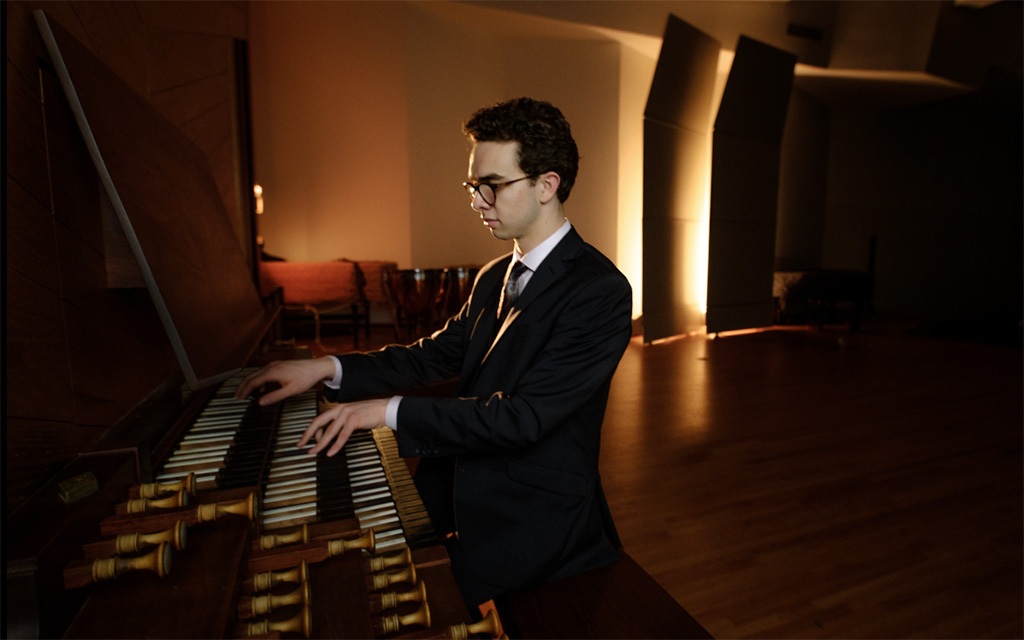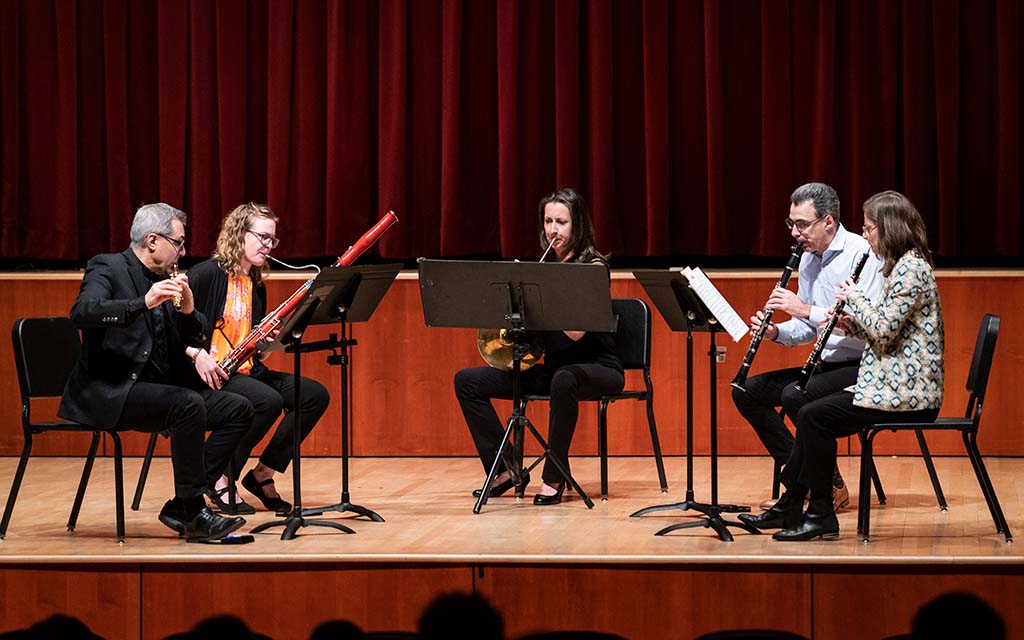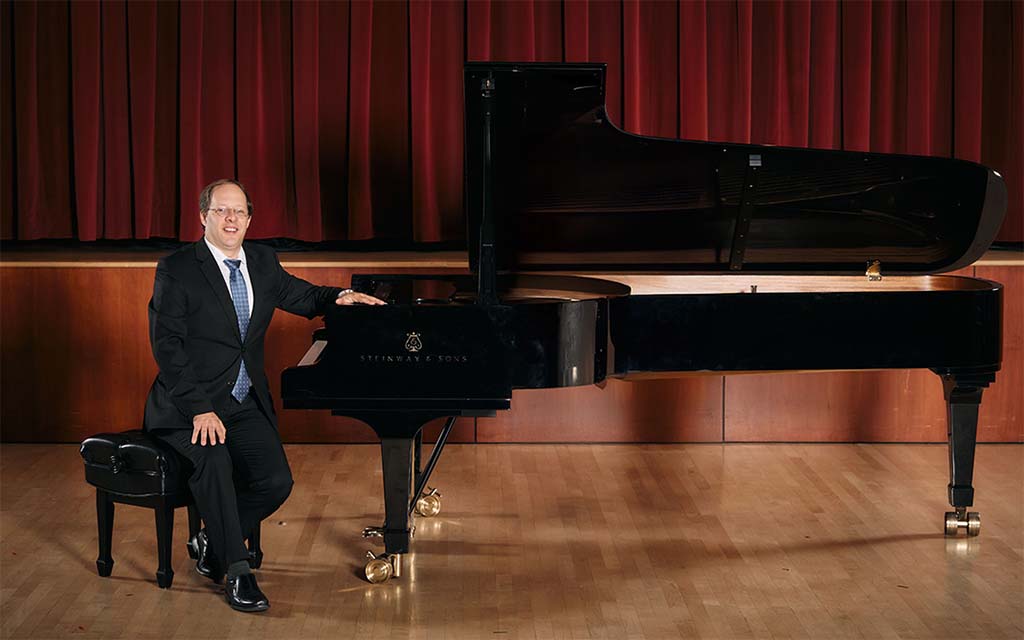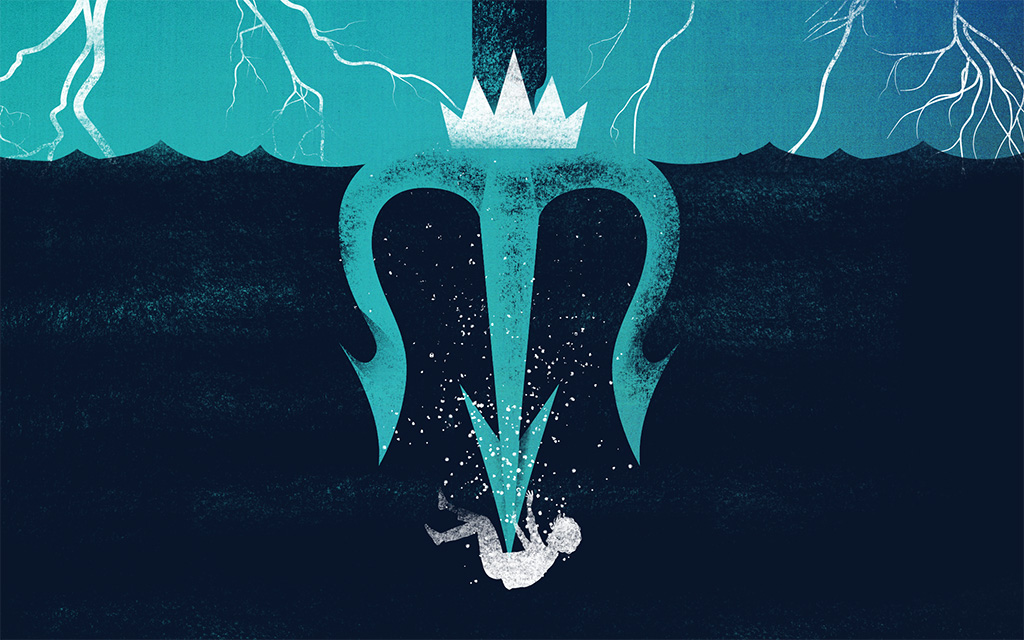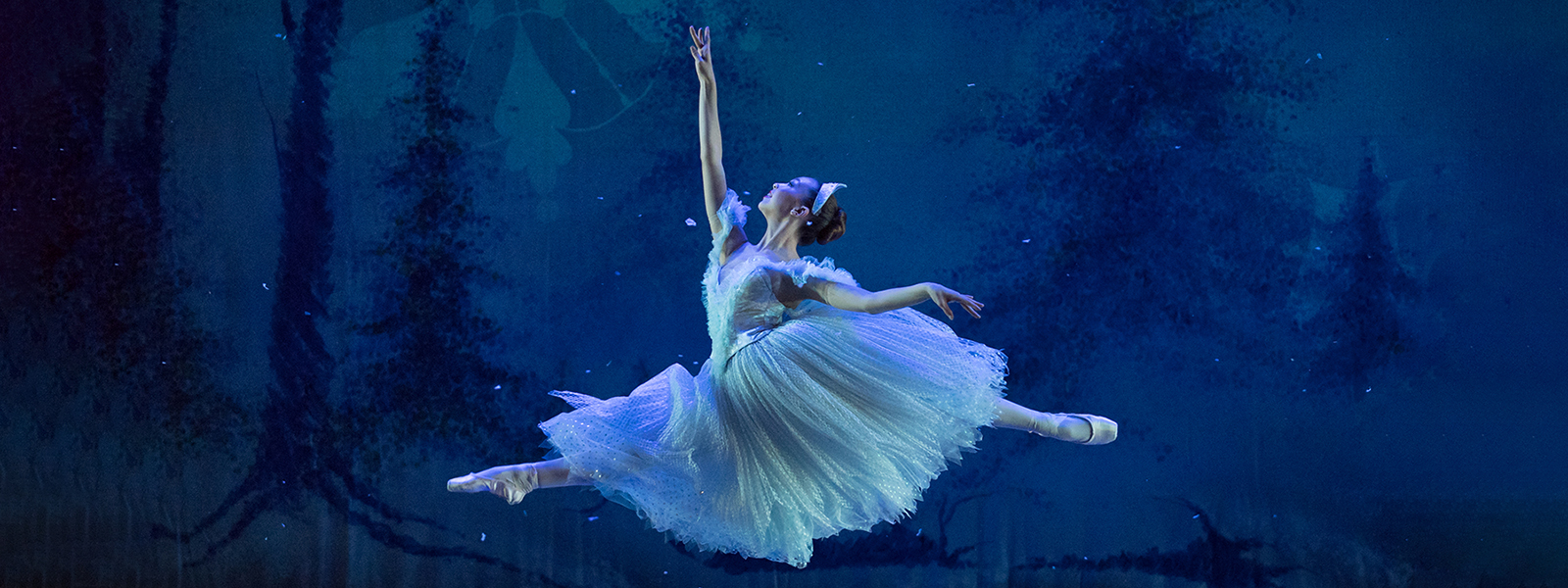Dancing the score: The collaborative craft of "The Nutcracker"
The views and opinions expressed by speakers and presenters in connection with Story Behind the Sound are their own, and not an endorsement by the UNC School of the Arts. This interview has been edited for length and clarity.
There are so many types of music in the world, but it can all fit into two categories: song and dance. That is, according to Chancellor Brian Cole. "A large majority of music in the history of mankind is dance," he explains, and it goes to follow that orchestras are used to, comfortable with, and well-versed in playing dance music. But playing music where somebody is actually dancing is an entirely different experience.
In productions like "The Nutcracker," where dancers and musicians come together to create a spellbinding live performance, there is an inherent synergy that must be reached. Behind every perfectly time pirouette and musical crescendo is an unseen agreement between the dancers and musicians. Who sets the pace? Who leads and who follows? To answer these questions and more, "Nutcracker" choreographer Ilya Kozadayev and orchestra conductor Chancellor Cole delve into the world between music and dance.
Introducing the experts
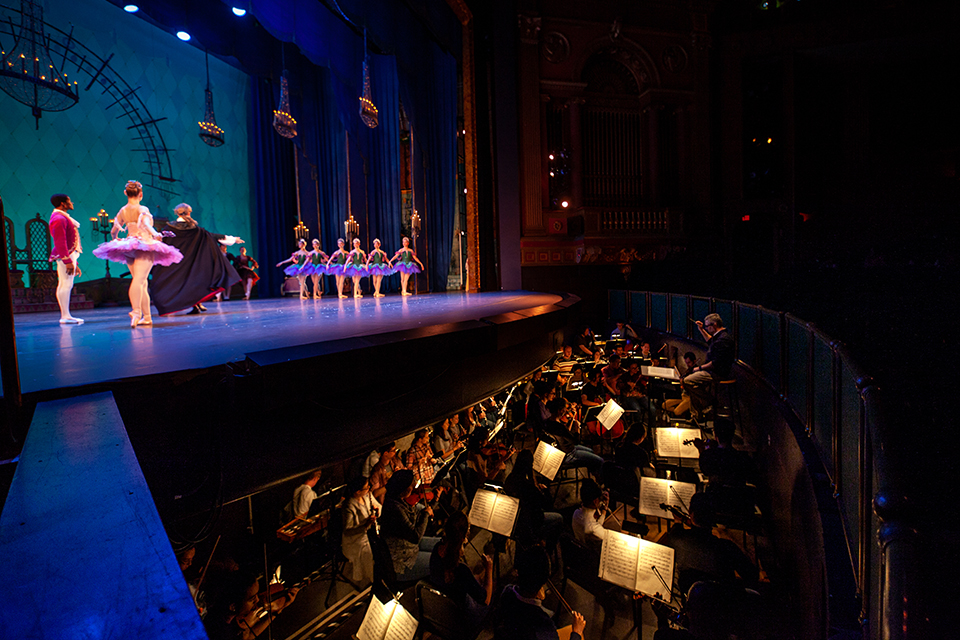
Chancellor Brian Cole conducting the Nutcracker Orchestra in 2018.
This year, Chancellor Cole returns to the orchestra pit to conduct the UNCSA Nutcracker Orchestra. Before becoming Chancellor, Cole was dean of the School of Music and led the Nutcracker Orchestra for two years. He studied instrumental conducting at the University of Illinois and orchestral conducting at University of Cincinnati, and his work as a conductor included conducting both for ballet and for opera, as well as conducting “The Nutcracker Suite” numerous times.
But Cole’s experience with “The Nutcracker” goes back much further – his first involvement with the production was as an oboe student performing in an orchestra, much like the students he is now leading.
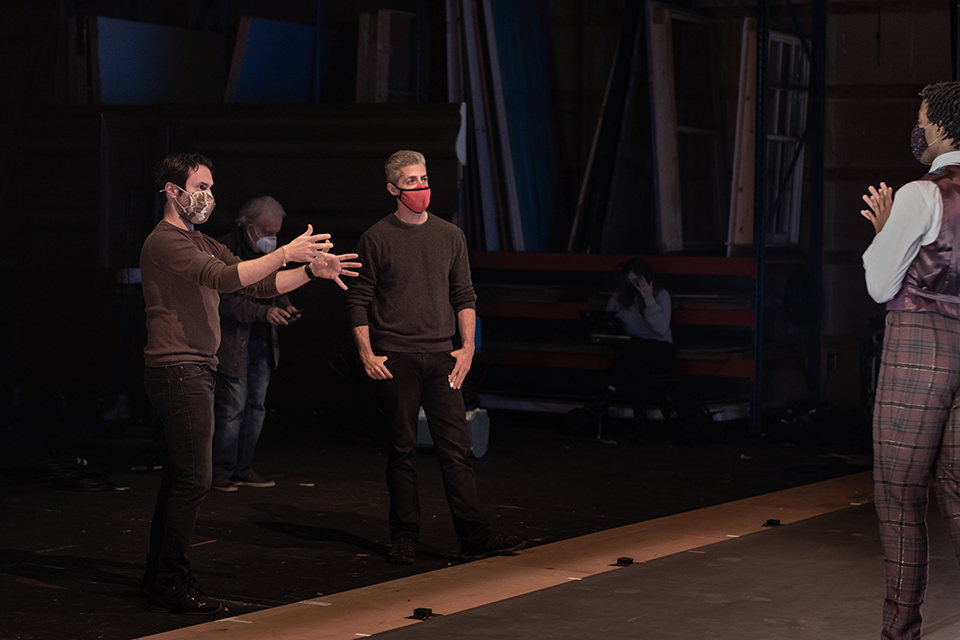
Ilya Kozadayev on set of the UNCSA "Nutcracker" film.
For choreographer, dancer and School of Dance faculty member Ilya Kozadayev, "The Nutcracker" has been at constant throughout his career. His first experience was performing in the ballet as a soldier in the same theater that the original production of "The Nutcracker" first debuted in 1892 - the Kirov Theatre in St. Petersburg, Russia. He went on to perform in the ballet in New York City, then with about a dozen other productions.
At UNCSA, Kozadayev was first tasked with choreographing and co-directing the film version of "The Nutcracker" at the beginning of the COVID-19 pandemic in 2020. In 2021, he was able to return the performance to the stage, though in a condensed and socially distanced format. Then, in 2022, he expanded the production back to its full length, reintroducing group dances like in the Party Scene.
Setting the pace
For the dancers and the musicians in a production like "The Nutcracker," simply following the score or choreography is not enough. Kozadayev explains that the process is a live, collaborative showcase. "The dancers adapt to the sound in real-time, the conductor reacts to the action on stage, and the orchestra, in turn, adapts to the conductor," he says. "It's one of the most wonderful processes in performing arts."
The dancers adapt to the sound in real-time, the conductor reacts to the action on stage, and the orchestra, in turn, adapts to the conductor. It's one of the most wonderful processes in performing arts.
Ilya Kozadayev, Choreographer
The live music element has a profound impact on the dancers. "When we talk about live music and its impact on movement, it's about the dancers’ movement in space and time, and that time will differ in each performance," says Kozadayev. The dancers must not only be in tune with the physicality of their movement but connected to the music and ready to react to the inherent nuances of a live score.
Meanwhile, the musicians are striving to meet the needs of the dancers. "The speed at which the musicians go – or don't go – is completely dictated by the dancer and choreographer," Cole says. "The biggest impact to the orchestra is how we must adjust what we do in service of the dancers. And it must always be in service of the dancers."
Learning to adapt
Dancers and musicians begin preparing for a production separately. The choreography is set to recorded music; for "The Nutcracker," dancers at UNCSA rehearse to recorded music for 13 weeks. Meanwhile, the orchestra is practicing and mastering the score on their own. For both, there is no element of change - the recorded music keeps the same tempo, and the written music does not require any fluctuations in speed.
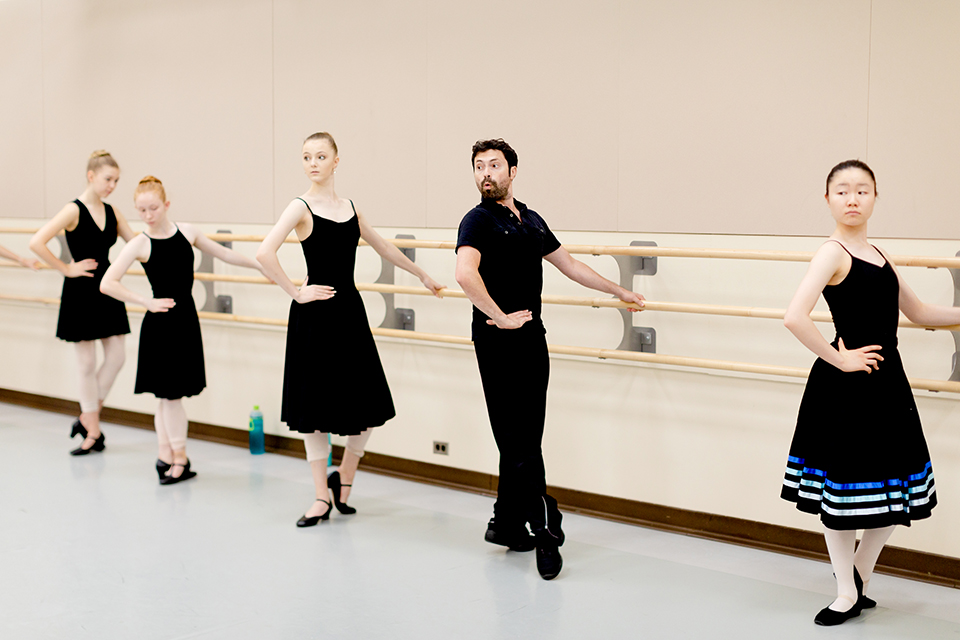
School of Dance faculty member Ilya Kozadayev teaches a character dance class.
Then the dancers and musicians come together. "This is where the important learning process and curve for the students, particularly the dancers, begins," says Kozadayev. "It's where these live elements of set changes, musicians, dancers and choreography all come together. That's where the collaboration really begins."
For the dancers, this means learning how to be in tune with the live sounds and adapting on the spot. "It's one of the most important parts of a dancer’s upbringing, to be able to adapt to the live music and to be able to collaborate, on the stage, in real time," says Kozadayev. As the musicality and the choreography is set, it falls on the dancers and musicians to adjust their speed and synchronize.
"I think of it as a runner who runs a hundred meters," says Kozadayev. "But they'd have to run the first ten meters in a certain number of seconds, the second ten meters in a different amount of seconds, the next ten meters in yet a different amount."
Creating a breath
For Cole, the dancers on stage are like another instrument. "We're not just accompanying the dancers - the ideal scenario, if we've done this really well, is that the dancers and the orchestra are playing music together," he says.
To connect the orchestra with the dancers and create a shared vision, Cole focuses on creating space in the right place. Just like with a singer, he explains, the music has to breathe. "If there's not a pause at the right moment – a breath essentially – if there's not space created somewhere, then the dancer won’t be able to dance this phrase in the same way," Cole says. "If it's not at the right tempo, then the music won’t live in the dancer's body in the same way; it won’t work."
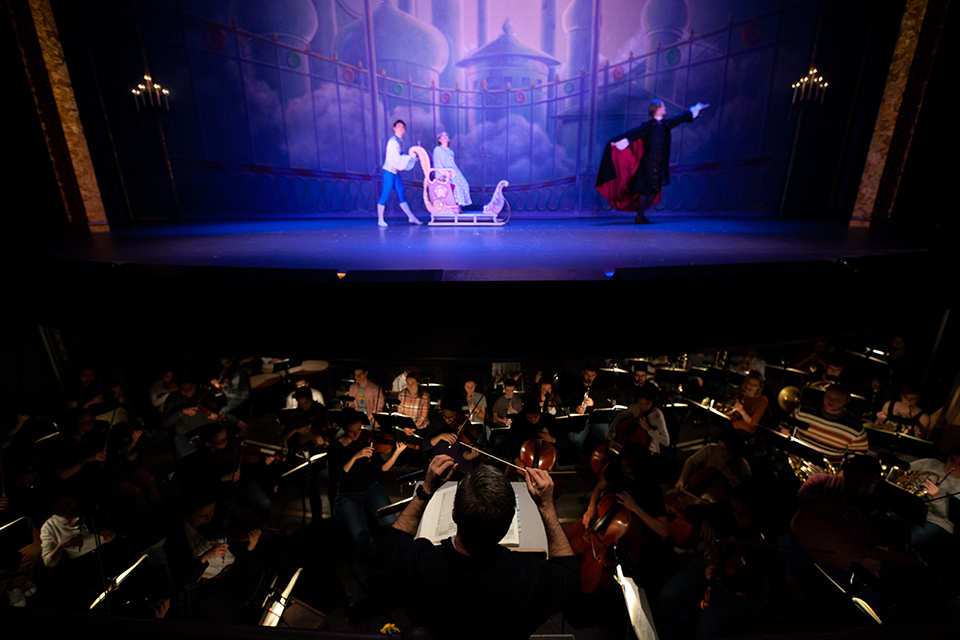
Brain Cole conducts the 2018 performance of "The Nutcracker."
To do this, Cole must stay aware of the action of stage and translate it in real time for the musicians. "The conductor's role is to be the communicator or connector between the two worlds – what's happening in the pit and what's happening on stage – and try to make them one world," says Cole.
The magic of "The Nutcracker"
"The Nutcracker" has not only endured since its first performance in 1892 but has grown to become one the of the most widely known ballets. For Cole and Kozadayev, its success is no mystery.
"It's the story. It's the time of the story, the time of the year that the story is presented, the iconic characters and the story of growing up, the story perhaps of falling in love. And the memorable music that we all know," says Kozadayev.
“We now associate fragments of this music with any number of things in the world,” says Cole, “but that only works because the music is powerful. The music is incredible. Nothing could live for as long as that has lived and be played so continuously for over 130 years if it wasn't really good music. And it's really good music.”
In the entire two-hour ballet, Cole says every piece of music is a masterpiece. Yet there is still one moment that he loves the most – the final duet of the first act, the Snow Pas de Deux. "With all these greatest hits, that one every time tugs at my heartstrings,” he says.
For Kozadayev, it's the same moment. "As far as sublime, beautiful music in the Nutcracker, that would be my favorite."
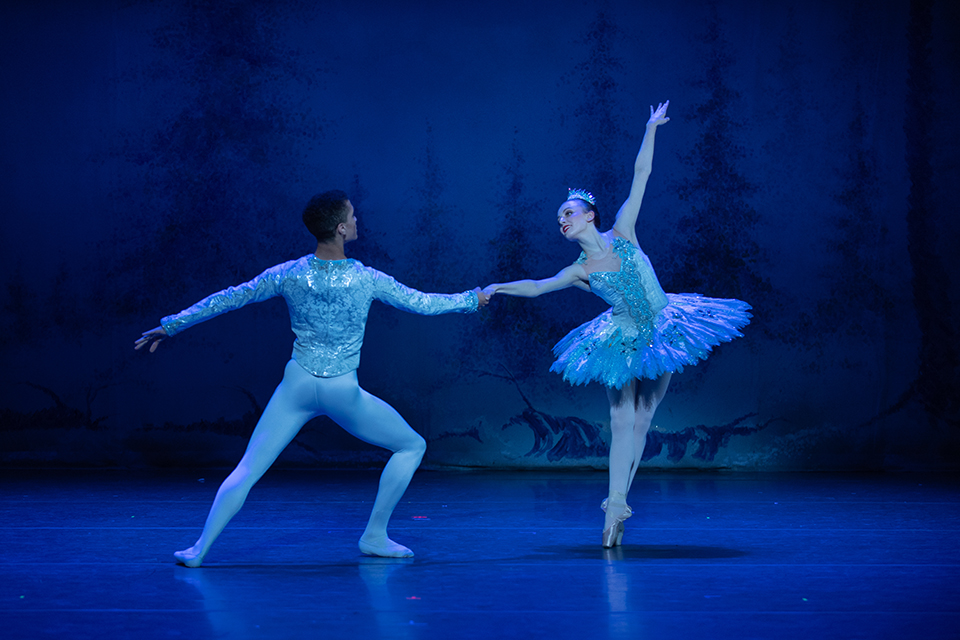
The Snow Queen and King perform the Pas de Deux in the 2019 UNCSA "Nutcracker."
You can discover the magic of the UNCSA "Nutcracker" every December. Performance dates and tickets can be found on the UNCSA Performance Calendar.
Get the best news, performance and alumni stories from UNCSA.
SUBSCRIBE TO OUR NEWSLETTERS(OPENS IN NEW TAB)(OPENS IN NEW TAB)(OPENS IN NEW TAB)(OPENS IN NEW TAB)(OPENS IN NEW TAB)(OPENS IN NEW TAB)(OPENS IN NEW TAB)(OPENS IN NEW TAB)(OPENS IN NEW TAB)(OPENS IN NEW TAB)(OPENS IN NEW TAB)(OPENS IN NEW TAB)
December 07, 2023


